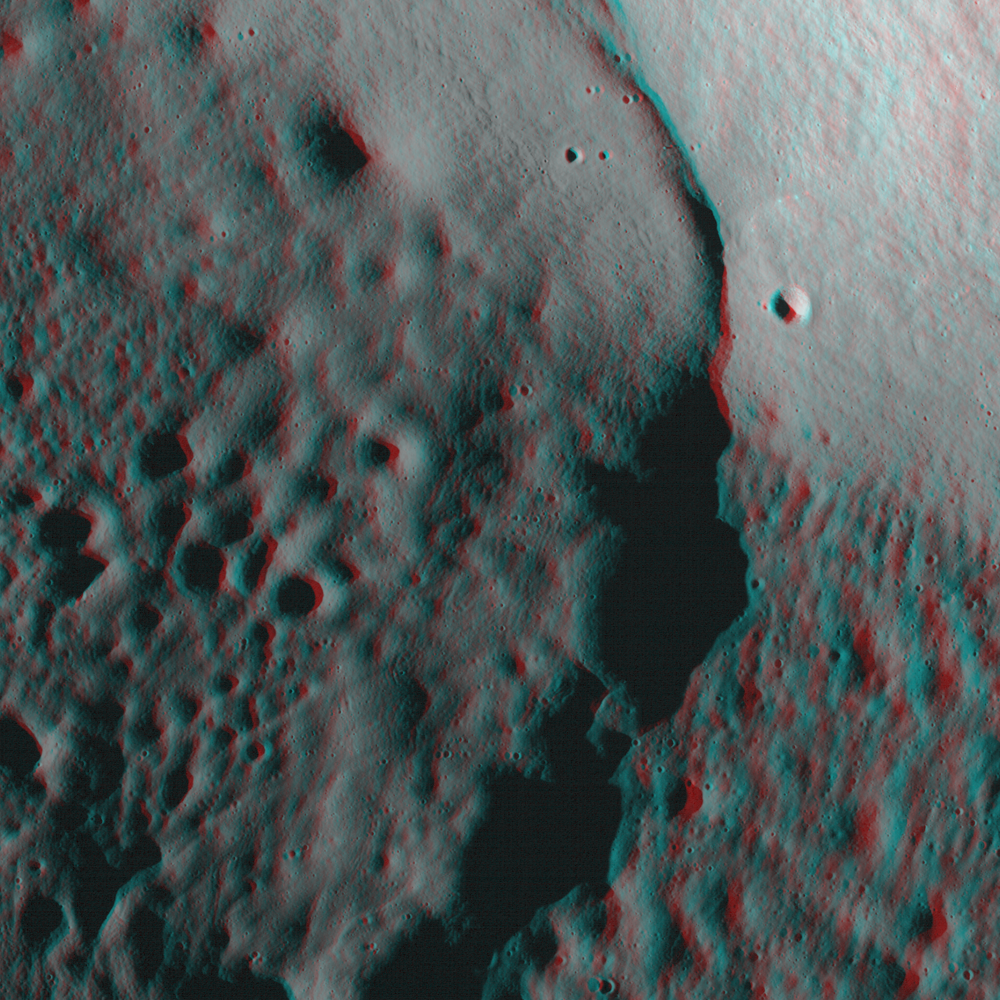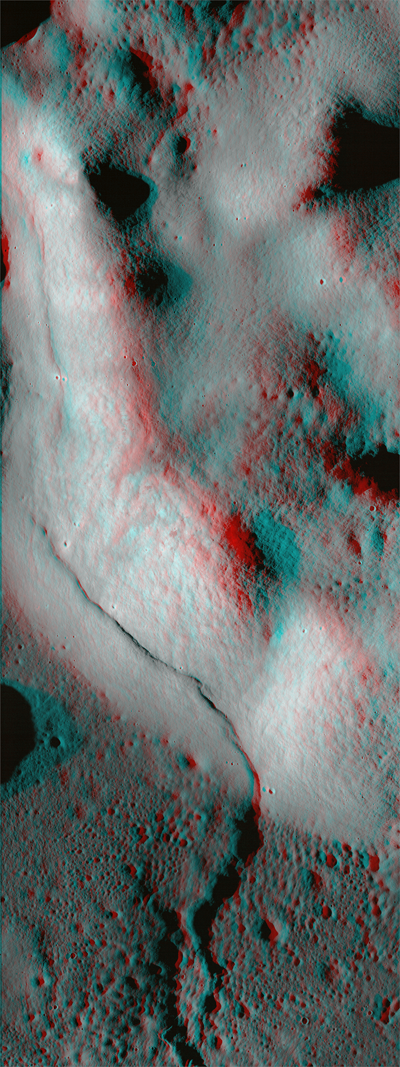
What is the origin of the scarp that offsets the floor of the Taurus-Littrow Valley?
The Lee-Lincoln scarp is an example of an important class of lunar tectonic features called lobate scarps, which are the visible part of a deep fault that distorts the surface. Here, the crust was under compression from east-to-west (that is, squeezed from left to right) and something had to give. The ground on the left buckled and rode up over the ground on the right, creating the bulge you can clearly see here. The Lee-Lincoln scarp not only offsets the floor of the Taurus-Littrow Valley, it extends up the slopes of North Massif (see image below). Topographic maps of the valley made using the Apollo Metric and Panoramic camera images show that the scarp reaches a height of about 80 m above the valley floor. The Apollo 17 astronauts actually drove across the southern section of the Lee-Lincoln scarp (just off the bottom of the image) in the Lunar Roving Vehicle on their way to South Massif.
Although stereo observations are acquired primarily for deriving detailed elevation maps, a 3D anaglyph image quickly reveals exciting details about the local topography – an important tool for scientists as well as a fun way to visualize the surface for all! The 3D anaglyph was created from a stereo pair (image ids: nacl00000adc and nacl00000d11) acquired by the LROC NAC cameras. When viewed with anaglyph glasses dramatic terrain is revealed. With the high convergence angle for this stereo pair the vertical exaggeration is 2-3 times.
Published by Eric Eliason on 21 July 2009